Drapery—artfully folded fabric—has been used by European artists for centuries, from ancient Greek sculpture to contemporary photography. As I prepare for the studio course I’m leading this Wednesday on sketching drapery after the Old Masters, I’ve been thinking about why.
1. Drapery Serves Composition
Artists make strategic use of drapery to aid composition, the arrangement of elements that leads our eye through a scene. In Peter Paul Rubens’s The Entombment, for example, drapery and color unite to heighten the viewer’s emotional response.
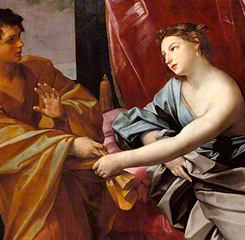
Joseph and Potiphar\’s Wife (detail), Guido Reni, about 1630
2. Drapery Accentuates the Body
Drapery serves to cover, but also reveal, the human form.
In Guido Reni’s painting of Joseph and Potiphar’s Wife, for example, fabric serves to accentuate the woman’s pearlescent bare shoulder, underscoring her attempt to seduce both her companion at left—and the viewer!
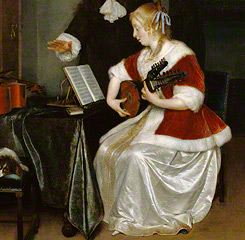
The Music Lesson (detail), Gerard Ter Borch, about 1668
3. Drapery Lets an Artist Show Off
Satin, silk, fur, linen, lace—drapery gives artists an excuse to prove their virtuosity at rendering light, surface, and volume.
The subject of this painting is a music lesson, but our eye is drawn to the woman’s satin and fur garments, not her lute. (I discuss this picture in more depth in a video here.)
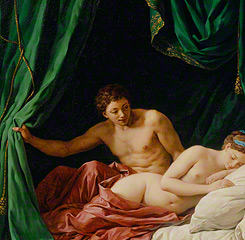
Mars & Venus, Allegory of Peace (detail), Louis Jean François Lagrenée, 1770
4. Drapery Creates a Theater
In a theater, when the curtain lifts we forget reality and surrender to illusion.
In this painting of two lovers, Lagrenée’s Mars and Venus, Mars lifts a curtain to seduce us into the scene; Venus sleeps innocently, unaware of our intrusion. (More about this painting here.)
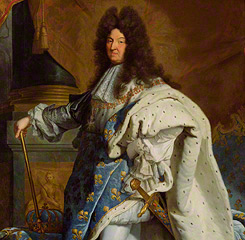
Portrait of Louis XIV (detail), Workshop of Hyacinthe Rigaud, after 1701
5. Drapery Is Political
Fabric is power.
In this court portrait of Louis XIV, the king’s dazzling ceremonial cape speaks of command in every detail. It’s covered with the fleur de lis of the Bourbon dynasty, while the interior is lined with ermine—every black dot the tip of a single animal’s tail.

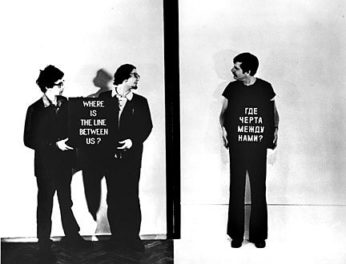
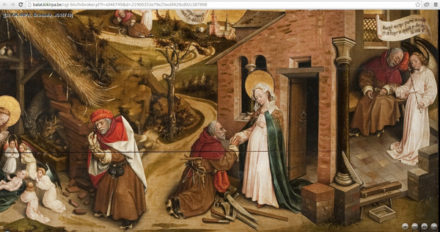

I took her tour on Rembrandt recently and Ms. Gershman is definitely a genius, she knows more about art and painting than anyone I have ever met. It was only an hour but she led us through the whole exhibit and it was a life-changing experience. I am thinking about signing up for some of her classes at the Getty, I heard those are excellent also.
I have really enjoyed Zhenya’s interesting and informative tours at the museum. She is a wonderful teacher and i have learned a lot from her exciting presentations. thank you, rose
It is good
Using the theme of drapery is a brilliant way to spotlight many of the works in the museum and Ms. Gershman presented a knowledgeable and entertaining discussion in her tour of the highlights of the Getty.
My wife and I were fortunate to attend the Getty and attend the tour on Highlights on a last minute schedule. The information on tapestry was very interesting on how each knot was formed and knotted on small sections and formed into a complete work. I remember her stating how the colors faded quickly and the works were subject to be easily damaged
We then went to the exhibit on photography a few stories below. There I witnesses the human tapestry but in great disrepair. The photos exemplified how we as a species have decayed and discolored on how we treat each other through racism, poverty,
Following this tour we then went to the Griffin Park Observatory and viewed a show on the perception of the earth as the center of the universe. I had an “ah hah” moment when I realized that the earth, a singe knot in the tapestry of the universe was at risk of becoming unknotted and diminishing the whole of creation. We must surely learn to live together or die alone. I thin the the real point in both my visit of the Getty tapestries and the Observatory is that we all understand the big picture. If the knots loosen and the color fades, the art is lost. Let all work to preserve the art.
Zhenya, what a poignant post. The Rubens is one of my favorite Getty paintings. What I love most is the way only the Virgin Mary physically touches Christ’s body; the other figures use the drapery to support His dead body. 🙂